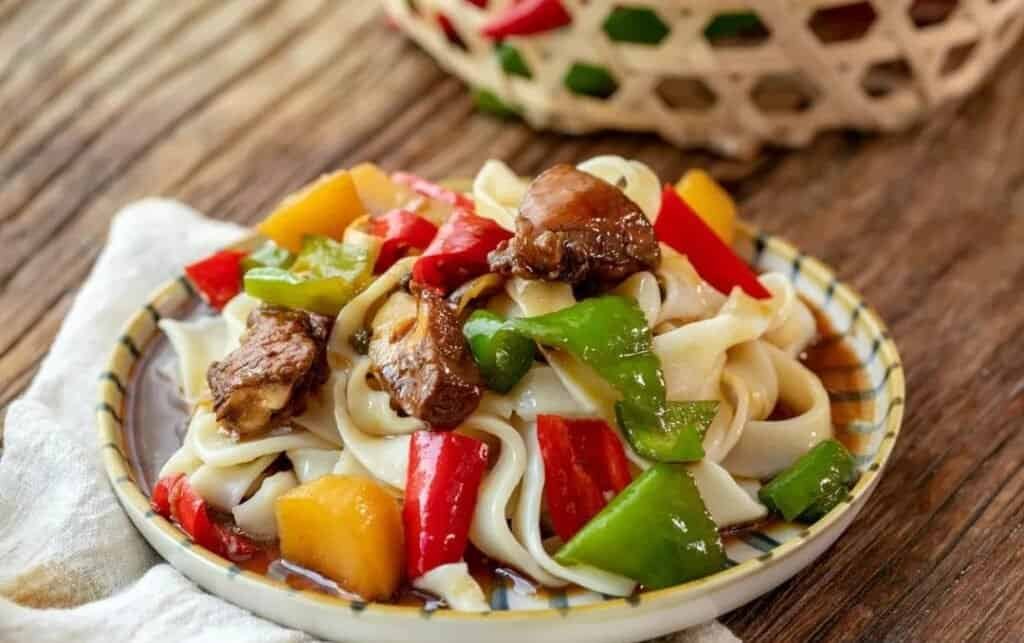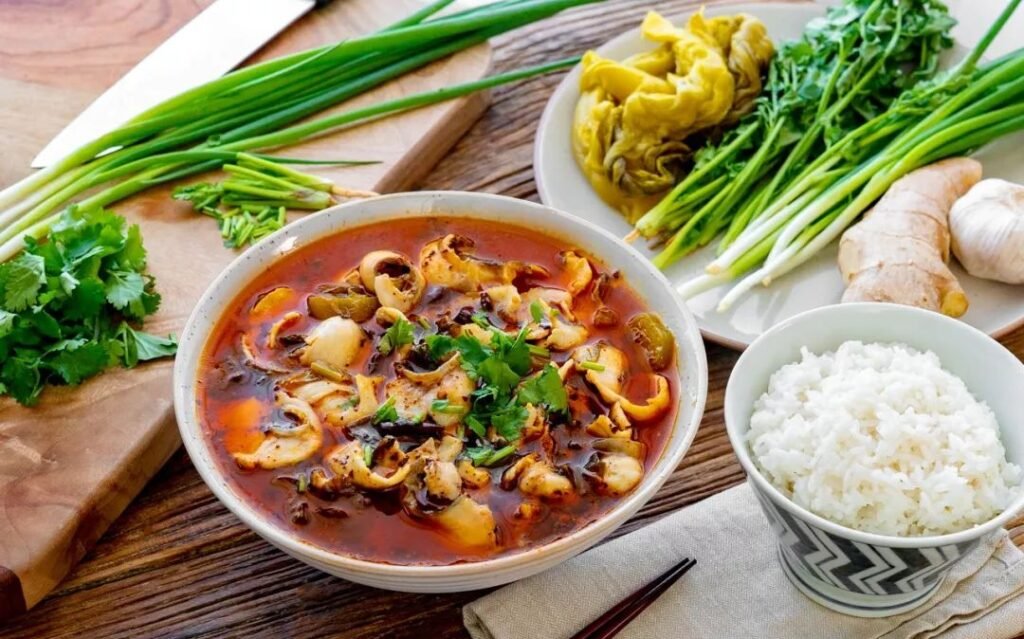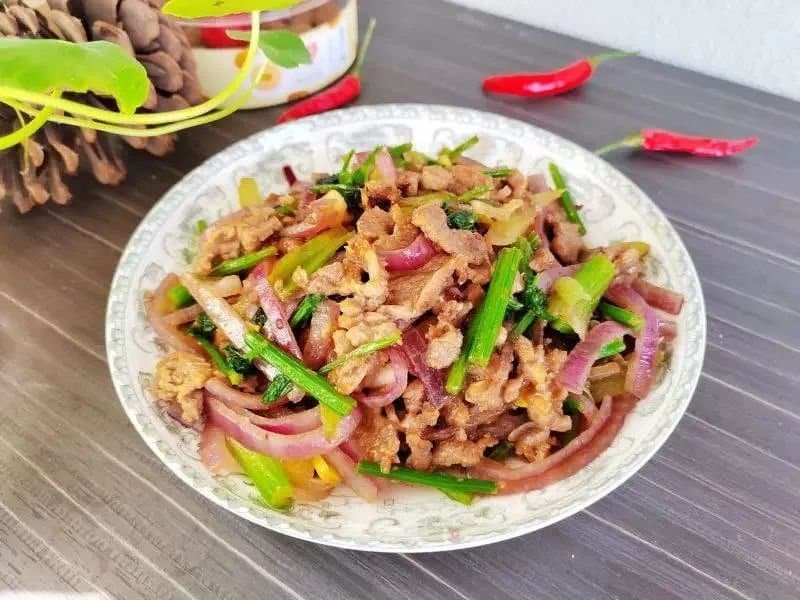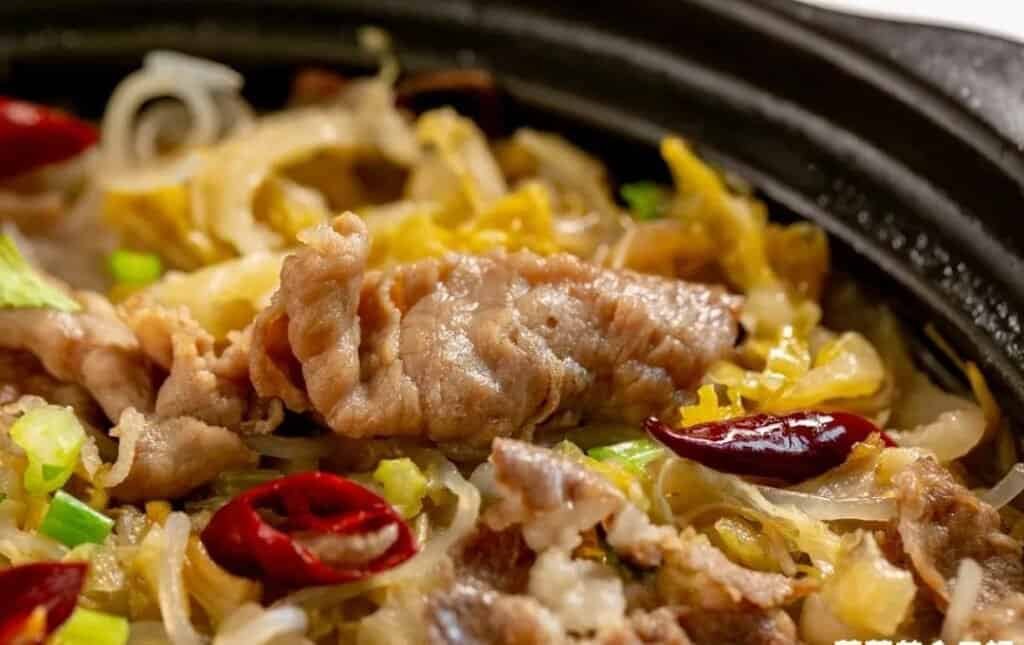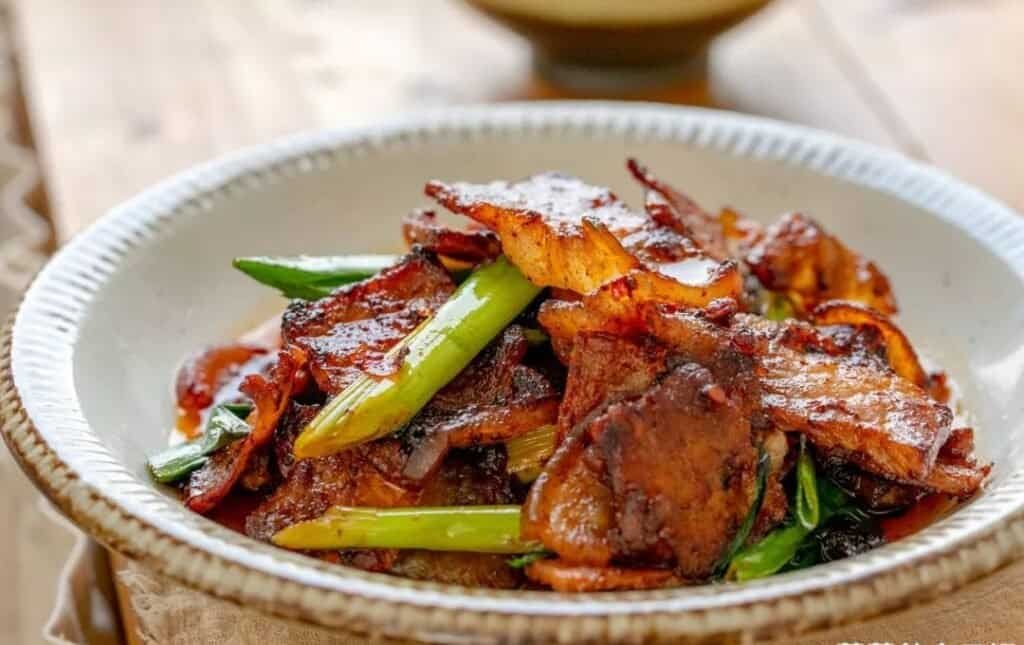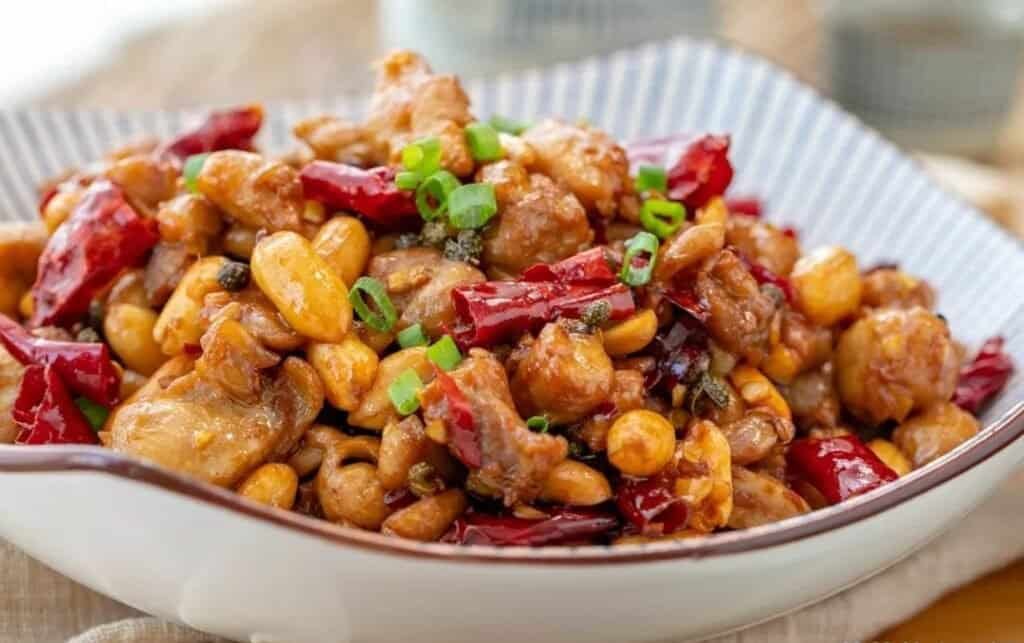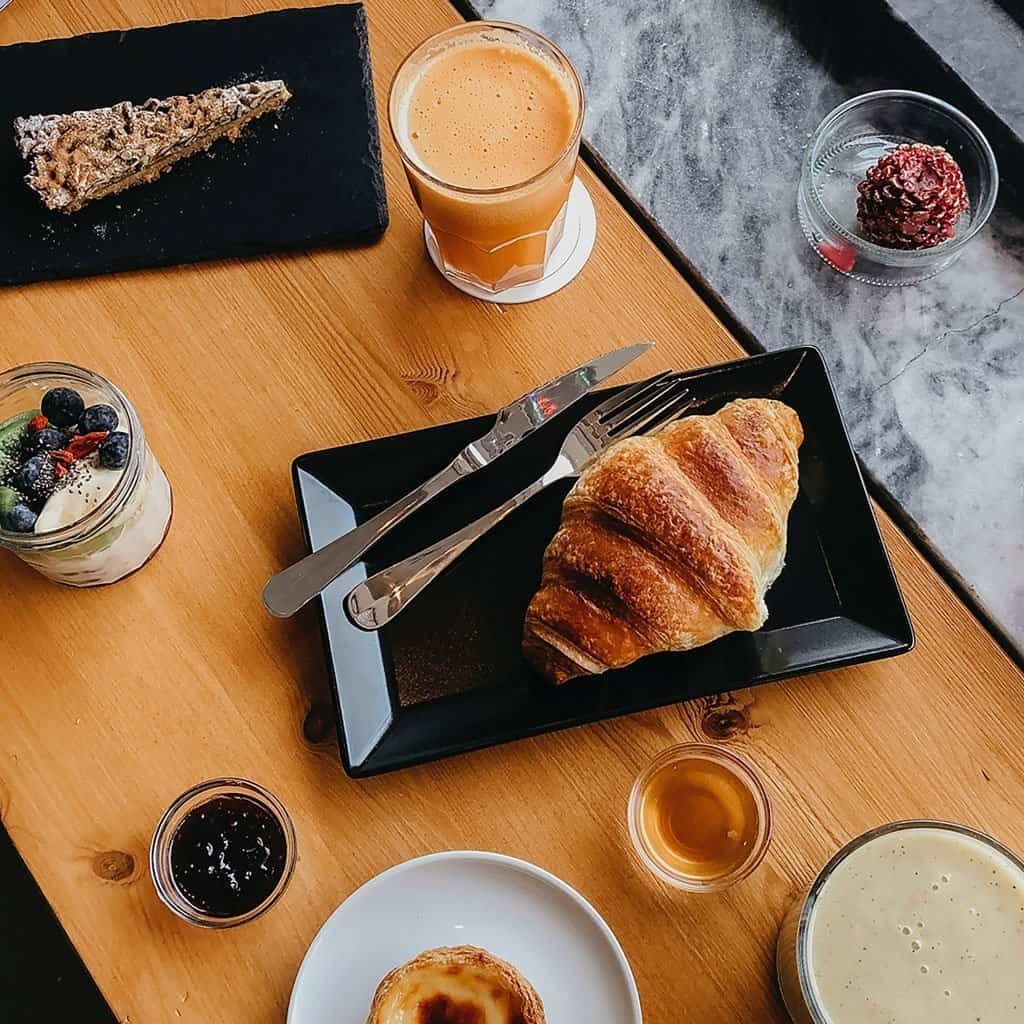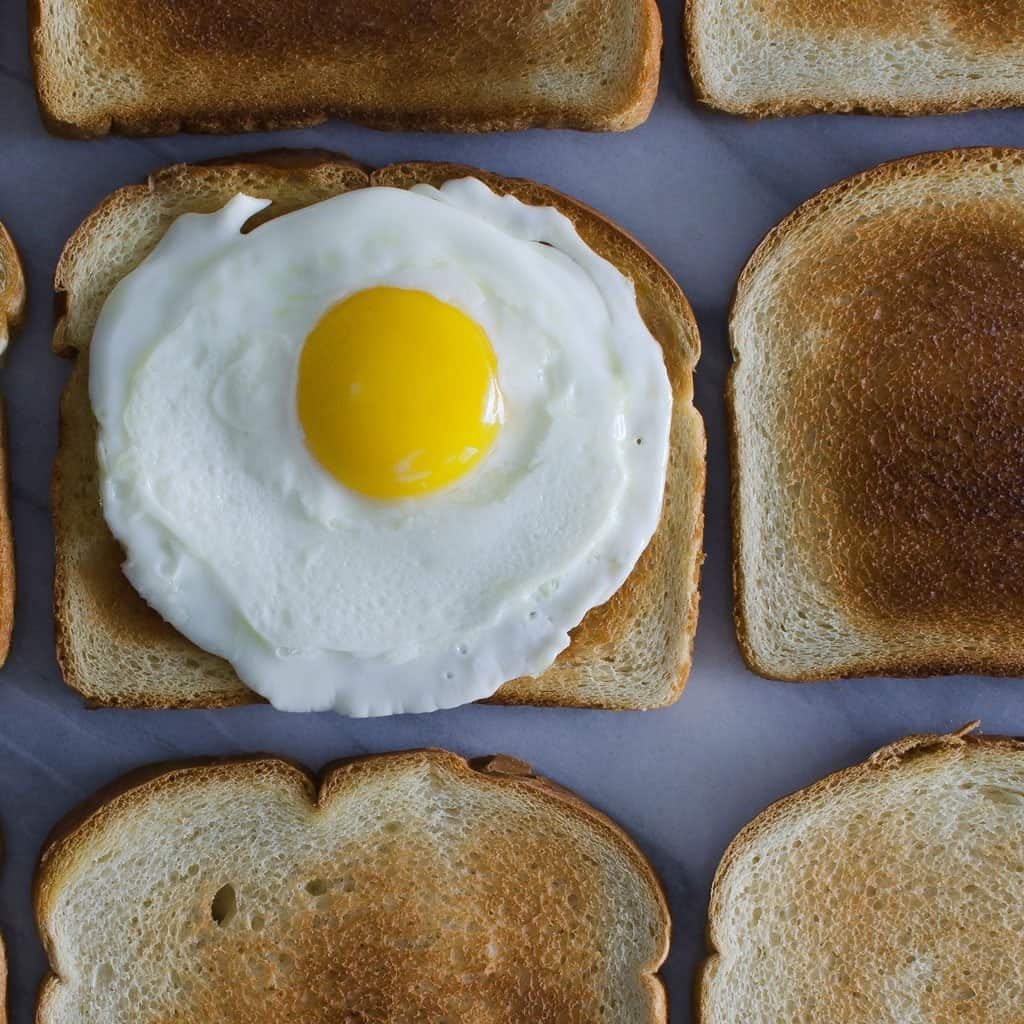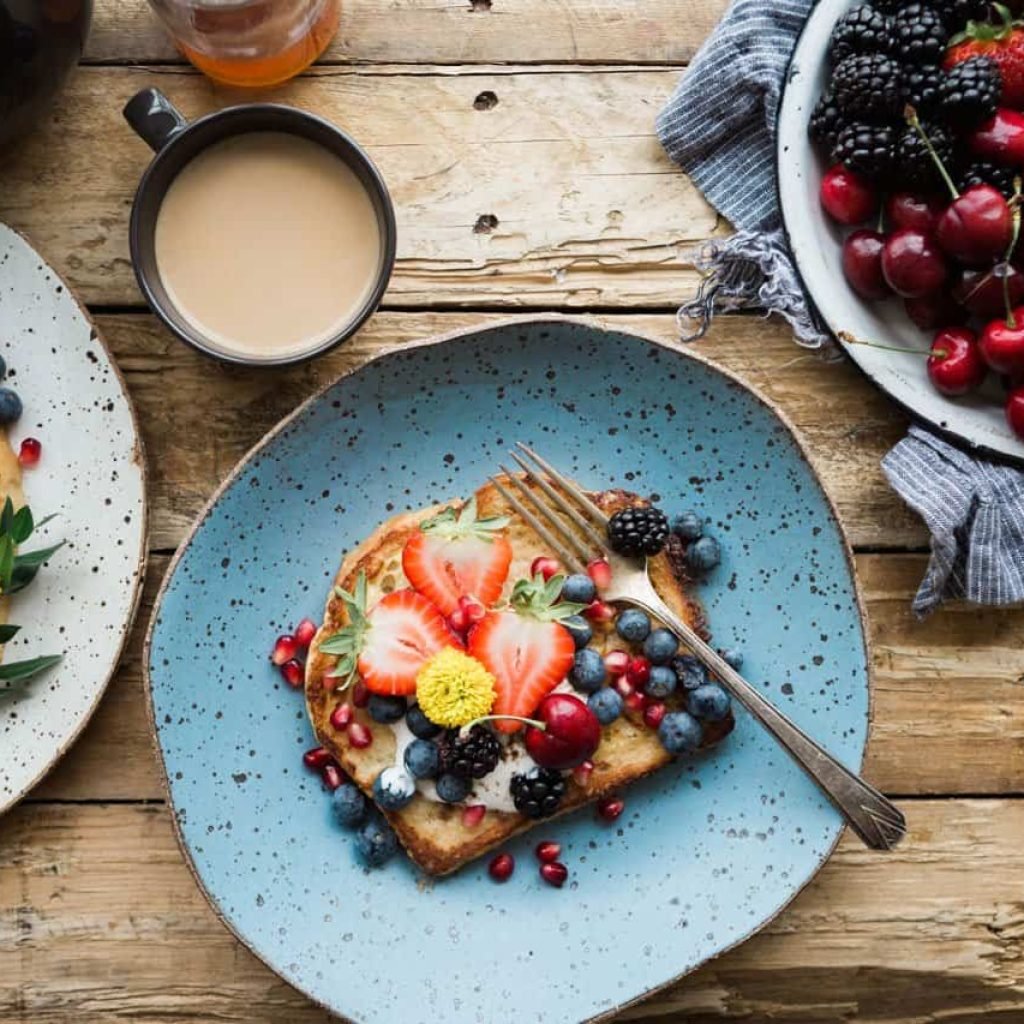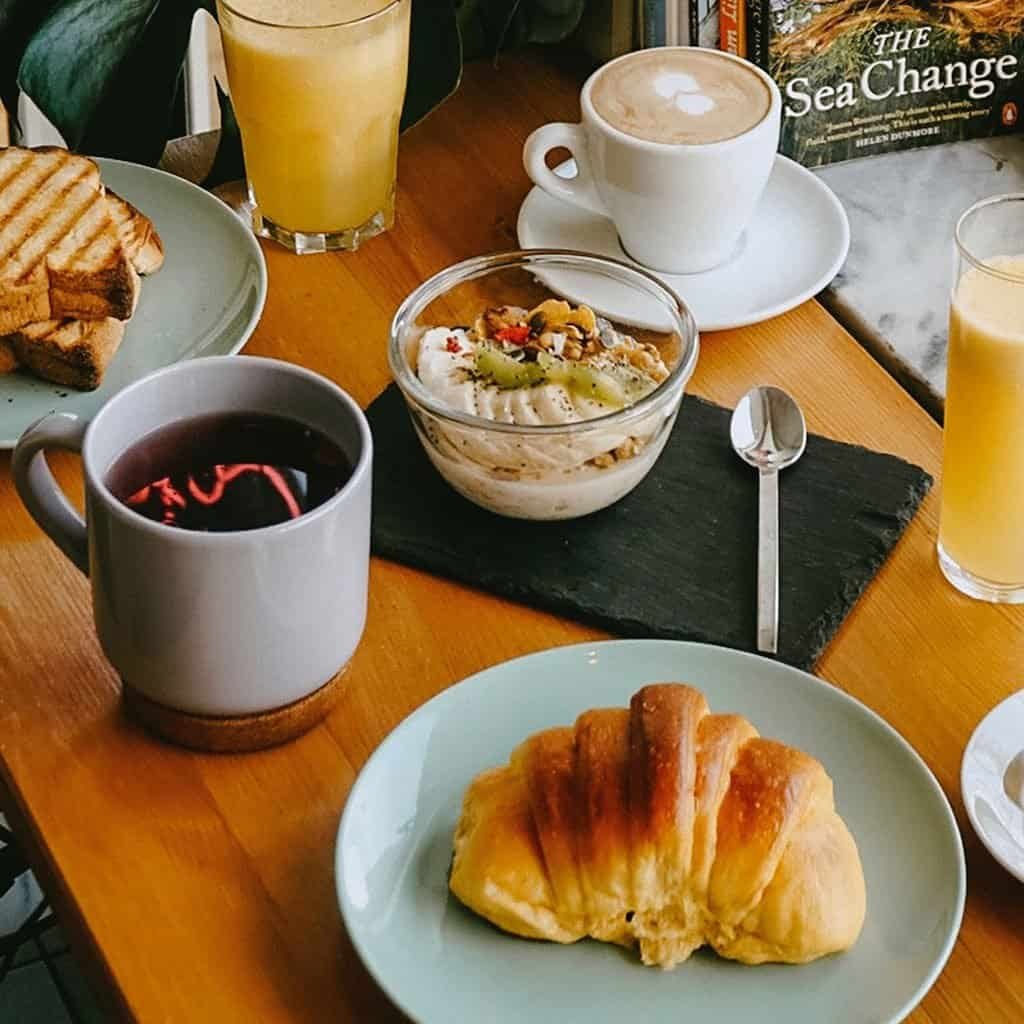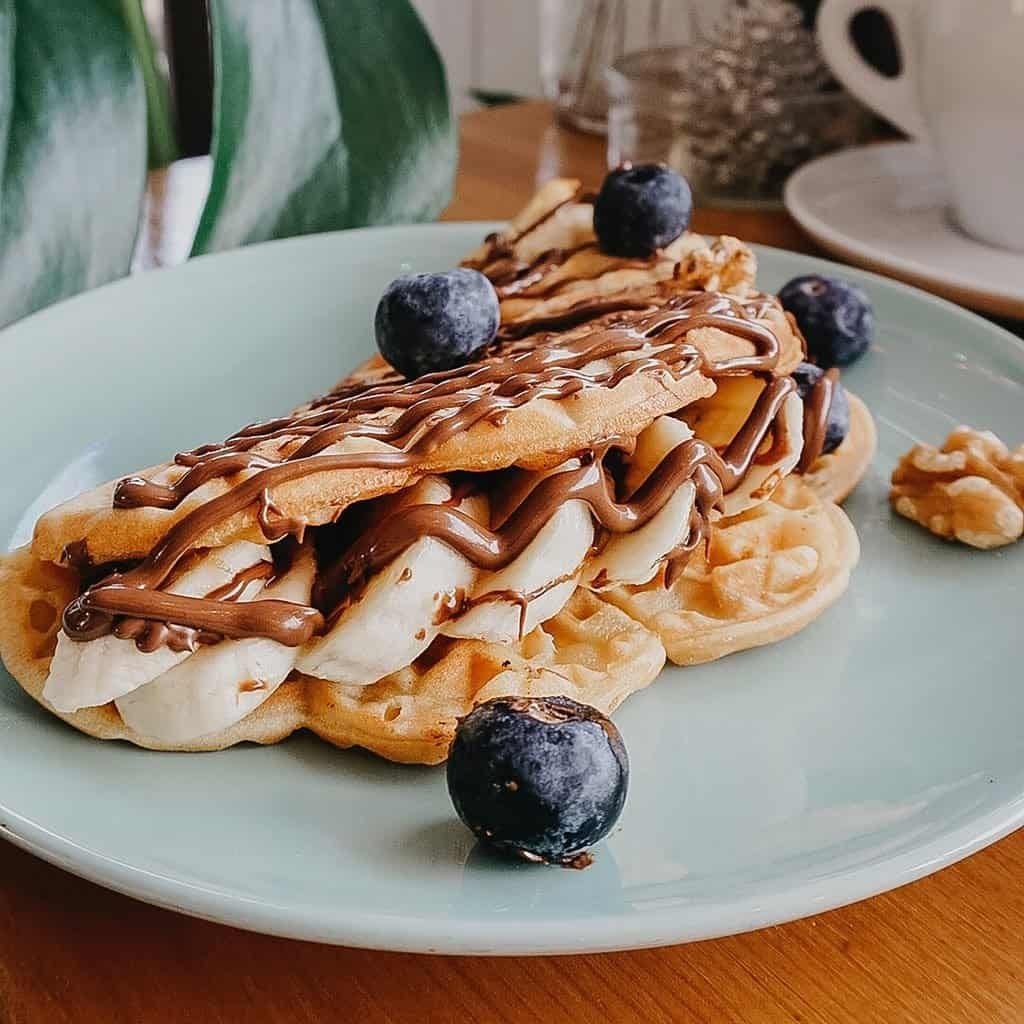Lately, it feels like half of my friends are in Xinjiang. Every time I scroll through my phone, I see skies so blue they break my heart, lakes so green they seem unreal, and piles of sweet melons and fruits that tower like little mountains.
Oh, how I wish I could hop on a plane to Xinjiang right now… but no, that’s just wishful thinking. Instead, I’m here at home, making a Xinjiang Big Plate Chicken, sending my best wishes to all the lucky travelers.

I’ve been to Xinjiang, and every time I go out for Xinjiang cuisine with friends, Big Plate Chicken is a must-order dish.
In my mind, Xinjiang is inseparable from this dish, and a romantic metaphor is hidden within it.
I remember reading a book by a Xinjiang author, Li Juan, years ago. In one chapter, she talks about hitching a ride with her first love, Lin Lin, on a dusty road to the county town. The journey was supposed to take a few hours but stretched into two days due to overloading.
Lin Lin kept comforting her throughout the trip, saying, “We’re almost there; the Big Plate Chicken is just ahead…”
It wasn’t the town worth anticipating, but the Big Plate Chicken. The destination’s most comforting and exciting element was unspoken but understood.
Like any other stewed chicken dish, Big Plate Chicken isn’t just about the chicken; it also includes potatoes, cooked until soft and mushy.
But the true essence of an authentic Big Plate Chicken isn’t the tender potatoes or the spicy and aromatic chicken; it’s the noodles mixed in at the end.

These noodles in Big Plate Chicken are wide, playfully called “belt noodles,” chewy and robust, soaked in the meaty, oily goodness, with the potatoes adding richness to the sauce, creating a perfect harmony.
Sucking them up with a ‘Biu’ sound, fireworks explode in my mind. At that moment, who cares about appearances? Even the most ladylike girls would let go of their reserve in front of a plate of Big Plate Chicken, digging in wholeheartedly.

The first bite should always be a piece of potato, crumbly and melting in your mouth, soft and flavorful.
After frying off the moisture, the chicken skin becomes slightly crispy. At the same time, the meat offers a spicy, saucy flavor with a hint of sweetness.
Having absorbed all the meat juices, the noodles are flavorful and more satisfying than any noodles cooked separately.

With meat, vegetables, and carbs, it’s the ultimate dish for a gathering of friends, bound to cause a scramble.
Want to try it? Let’s get cooking!
Xinjiang Big Plate Chicken Recipe -新疆大盘鸡-
Ingredients:

- Chicken: 1 free-range chicken, 2 potatoes, 1 red pepper, 1 green chili pepper
- Half a green onion, 5 slices of ginger, 5 cloves of garlic, 10 dried red chilies, a handful of Sichuan peppercorns
- 3 star anise, 1/2 tablespoon dark soy sauce, 1/2 teaspoon salt
- 2 tablespoons brown sugar, 2 tablespoons vegetable oil
- Noodles: 150g all-purpose flour, 70-80g water, 1g salt, 1 tablespoon vegetable oil
Instructions
- Clean the chicken and cut it into 3cm cubes using kitchen scissors (they’re more convenient for women to handle whole chickens). Start by cutting through the skin and flesh, then snip through the joints.
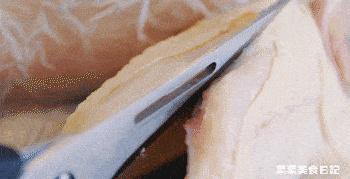
2. Marinate the chicken with 1 teaspoon of salt, 1/2 tablespoon of dark soy sauce, green onions, and ginger for 30 minutes.

3. Peel and clean the potatoes; chop the green and chili peppers into chunks and slice the green onions and ginger.
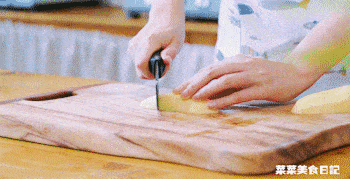
4. Heat 2 tablespoons of vegetable oil and brown sugar in a wok over medium-low heat until the sugar completely melts. Make sure the wok is dry to avoid oil splatters. Brown sugar is better for coloring and flavor, and it’s easier to control the heat compared to white sugar.
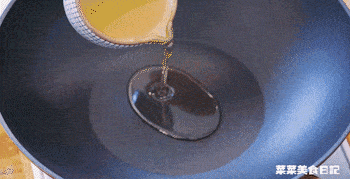
5. Add the chicken pieces and stir-fry until they’re coated in the sugar mixture.
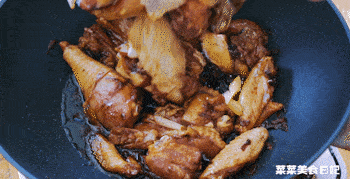
6. Add the green onion segments, ginger slices, and garlic, and continue stir-frying until the chicken shrinks.
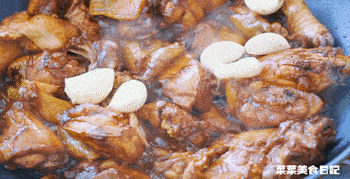
7. Add the dried chilies, Sichuan peppercorns, and star anise, then cover the chicken with boiling water.
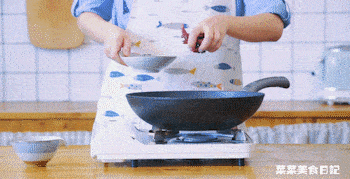
8. Once boiling, add the potato chunks, cover, and simmer on medium-high heat for 15 minutes until the potatoes are soft.

9. Add the red and green pepper chunks, and stir-fry for 3 minutes until they’re just cooked, then season with salt and reduce the sauce over high heat.
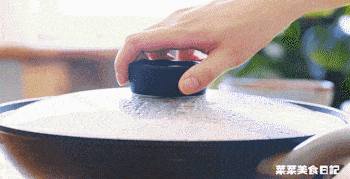
10. Mix 150g of flour, 1g of salt, and 1/2 teaspoon of vegetable oil in a wooden basin, then gradually add 70-80g of water, stirring with chopsticks, until it forms a rough dough. Cover with plastic wrap and let it rest for 20 minutes.

11. After 20 minutes, knead the dough on a lightly oiled surface until smooth.
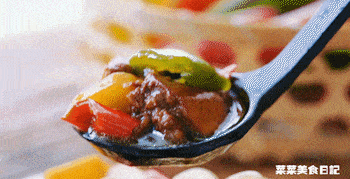
12. Flatten the dough and roll it out with a rolling pin.

13. Cut the dough into strips, coat them with vegetable oil, cover them with plastic wrap, and let them rest for 30-60 minutes, making them easier to stretch.
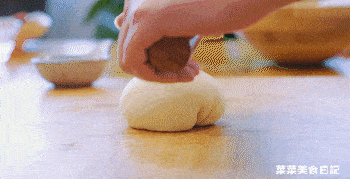
14. Boil water and pull the dough into long strips, cooking until they’re done, with no white core visible. Add cold water during cooking to ensure they’re thoroughly cooked.
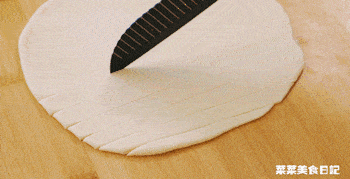
15. Mix the cooked noodles into the Big Plate Chicken, ensuring they’re covered in sauce, and then dig in!

Although I can’t go to Xinjiang, having a bowl of this brings me great joy.

Cooking Tips:
- Choosing the Right Chicken: Opt for a free-range chicken if possible. It offers a richer flavor and firmer texture. You can also use chicken wings and thighs as alternatives. Remember, each part of the chicken adds a unique flavor.
- Marinating the Chicken: Take your time with the marination process. Giving the chicken at least 30 minutes to marinate with soy sauce, salt, ginger, and green onions helps infuse it with depth of flavor.
- Preparing the Potatoes: Cut the potatoes into large chunks so they don’t dissolve during cooking. They should be soft and mushy but still hold their shape.
- Balancing the Spices: Adjust the amount of dried red chilies and Sichuan peppercorns according to your spice tolerance. They are crucial to achieving the dish’s signature spicy flavor.
- Cooking the Sugar: When caramelizing the sugar, keep the flame low to avoid burning. Brown sugar is preferred for a richer color and flavor, but keep a close eye on it as it melts.
- Stir-Frying the Chicken: Ensure each chicken piece is evenly coated with the caramelized sugar. This step is crucial for developing the dish’s rich color and flavor.
- Simmering the Dish: When adding the potatoes and peppers, ensure they are submerged in the liquid to cook evenly. The simmering process is essential for melding the flavors together.
- Making the Noodles: When making the dough for the noodles, ensure it’s not too sticky or too dry. A smooth, pliable dough is critical. Letting the dough rest is crucial for developing the gluten, giving the noodles a chewy texture.
- Cooking the Noodles: Boil the noodles until just cooked – they should be al dente. Adding them to the dish while still firm allows them to absorb the flavors without becoming mushy.
- Finishing Touches: Adjust the seasoning towards the end of cooking. The reduction of the liquid concentrates the flavors, so it’s best to taste and adjust the salt or sugar as needed.
Remember, the beauty of this dish lies in its rich, layered flavors and the harmony between the chicken, vegetables, and noodles. Enjoy the process and the delightful flavors of this traditional Xinjiang dish!

